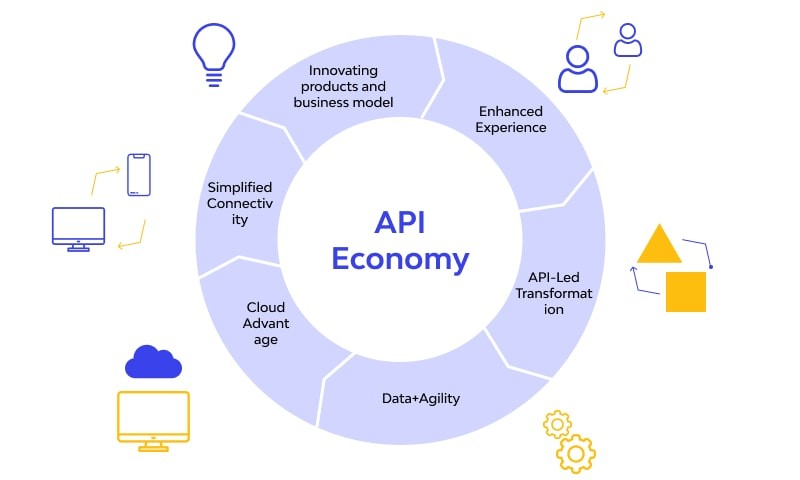Many experts work in projects where API's* are important enablers in the success of transformations. Although from a conceptual point of view it sounds easy to open assets of an organization, the implementation needs to be done carefully as it touches apart of the technical challenges (security, scalability, testing, information modelling, use of standards...) and also often data and privacy challenges. It requires a well thought architecture and governance maturity.

API thinking on the agenda already a decade ago.
A recent discussion/brainstorm with a customer triggered this poste. A lot of interpretations exist.
This topic was on my agenda more than a decade ago. At the time I was working in the telco industry and we tried to translate a vision of an open - connected company with partners. We called it at the time the "business accelerator approach". (Jan Sonck , Geert Degezelle , Jan Van Wijnendaele , Stéphane Jacobs do you recall ;-)). not an easy one with limited success. At that time, the model was insufficiently clear and we encountered many challenges on people, processes and technology.
API approach from a business angle
A lot of literature exists on the business value of an API approach. I believe it boils down to having a clear strategy on WHY and tackling it from that angle. A step by step approach is needed to get adoption in an organization that looks at an API strategy . 2 angles to address it. Please do add in comments other angles and/or examples of successful implementations. We can all learn from each other.
As a (new) business model : B2B2x
Which assets can be made available to partners in the ecosystem? A reflection is required on which assets could benefit your partner to build a new service around it with a mutual benefit. Some examples:
- Micro-billing => in telco examples are SMS parking (micro amounts on the invoice). Important here is who bears responsibility for payment
- Customer base as G2M channel + use of identity systems (trusted identity). Ex: KBC and the Kinepolis movie ticket service.
- Trusted identity provider: e.g. credit score of an organization based on VAT number
- Shared infrastructure : e.g. 3D printing service in order to optimize usage.
Location services in a telco context : this will become even more important in the 5G world we're entering - Anonymized customer behavior data in a retail context.
- .....
The monetization question should only be investigated in a later phase (too often this triggers the thinking and ambitious business cases are drafted...). One should first investigate and reflect on the value that is provided and value creation as a result of the exchange. There should be a clear (perceived) value creation. Only then different monetization possibilities exist from free , pay per use, reciprocal exchange, subscription, etc. This is a topic by itself.
This angle is most often investigated and when successful undoubtedly with higher return. This approach is in most companies the biggest challenge due to all type of discussions (implementation/cannibalisation,....)
As a model to realize cost savings for your customers as a priority: B2B context
Opening assets can result in more automatization at your customers. Mutual benefits can be realized by less manual work, higher quality of data exchanges, deeper relation. It can support customer experience initiatives (focus on removing friction). Some examples :
- One of the most advanced for more than a decade was the exchange of messages in an EDI and e-invoicing or bill presentment context. A lot of efficiency was realized (especially when standardization occurred).
- Exchange of information in order to complete a transaction (exchanging customer ID's for example)
- Most organizations moved from paper exchanges (although i still see a lot of paper exchanged that could perfectly be digitized via advanced OCR and AI) to auto entry into the systems (e.g. expense reports directly via portal in accounting package). APIs can provide further (hyper) automation. It results in cost savings , quality increase for both parties and deepens the relation . Incread benefit receiving party : better quality + cost savings for receiving party. Increased user Benefit: Better Transparency + Better Quality .
Similar here the main question is which (perceived)value is generated?. Only then a monetization model can be: Direct model or indirect model and based on the realized efficiency that can be split as a compensation to make the API available. In case of price evolution, it can also be used towards high volume customers instead of discounts.
Many angles exist. My view is to have a clear WHY you enter into these business model innovations, focus and start step by step.
Do share your thoughts and successful examples. We can all learn from each other.
cheers Stijn